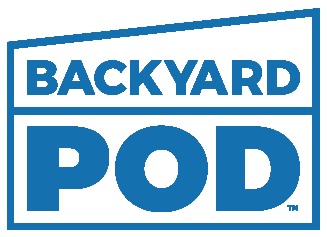Quick Take – ADUs vs. Tiny Homes
By Kelly Kassian
ADU vs. Tiny home:
Understanding the difference
Everyone lumps accessory dwelling units (ADUs) and tiny homes together, but they’re not interchangeable. Both squeeze more living space out of less square footage, yet the way they’re built, taxed, insured, and used can be night-and-day.
Below is a bite-size guide that turns the jargon into plain English so you can pick the right option—and avoid costly detours.
What Is an ADU?
An ADU is a fully independent living space—kitchen, bath, sleeping area—permanently built on the same lot as a main home. It can be:
Detached: a standalone backyard cottage.
Attached: an addition that shares a wall with the main house.
Conversion: a garage, basement, or attic turned into a legal suite.
Think long-term rental, multigenerational living, or a serious work-from-home office.
What Is a Tiny Home?
A tiny home is a micro-dwelling (≤ 400 sq ft) that’s usually mobile—built on a trailer with wheels. It can sit on a friend’s land, in an RV park, or on its own small lot. You get ultra-low footprint and the option to move, but it’s often regulated like an RV.
What’s the Difference Between the Two?
Pros and Cons of Each
ADU Pros
Adds real property value and equity.
Can bring steady rental income.
More room for bedrooms, storage, and accessibility features.
ADU Cons
Higher build cost ($200k+ in many markets).
Permitting maze: setbacks, height limits, rental rules.
Tiny Home Pros
Lower upfront price.
Mobility—take your house on the road.
Smaller environmental footprint (uses less water, power, stuff).
Tiny Home Cons
Harder to park legally long-term.
Depreciates like an RV.
Space can feel really tight for more than one person.
Which is Right For You?
Pick an ADU …
You own land with backyard space.
You want long-term ROI and higher resale value.
You plan to host relatives or rent to tenants.
Pick a Tiny Home if …
You crave a nomadic lifestyle.
You need the cheapest path to going tiny.
You’re fine with minimalist living under 400 sq ft.
Lifestyle and goals trump everything. If predictability, appreciation, and code compliance matter most, go ADU. If freedom and low cost rule, tiny home wins.
How Do You Build an ADU?
(8-Step Snapshot)
Define the purpose – rental, in-law suite, office?
Locate space – detached, attached, or conversion.
Set a budget – expect $200k–$500k depending on size.
Research builders – vet reviews, portfolio, service area.
Schedule site visits – get accurate bids and timelines.
Choose a floor plan – prefab or custom.
Select finishes – flooring, cabinets, fixtures.
Break ground & monitor – 4–6 months build time; ~9–12 months all-in with design + permits.
Pro tip: A design-build firm such as Backyard Pod streamlines steps 4-8 under one contract so you’re not juggling architects, engineers, and subs.
FAQs About ADUs and Tiny Homes
Are ADUs and tiny homes the same thing?
No. An ADU is a permanent secondary home on an existing lot; a tiny home is usually mobile and classified as an RV unless fixed to a foundation.
Do I need different insurance?
Yes. ADUs use standard homeowners (HO-3) or dwelling endorsements. Tiny homes often require RV or specialty tiny-home policies.
How much does an ADU cost to insure?
Roughly $500–$1,500 per year depending on size and rental use. Tiny-home insurance averages about $600 per year.
Can I Airbnb a tiny home in my backyard?
Only if your city allows long-term RV or tiny-home parking and short-term rentals. Many don’t. ADUs are easier to permit as rentals
What services does Backyard Pod offer?
Backyard Pod handles feasibility, design, permitting, and full construction of detached ADUs (studios to 2-bed/2-bath) across Texas.
Where does Backyard Pod build?
Currently serving the Austin metro and expanding into Houston and surrounding areas.
How long will Backyard Pod take to finish my ADU?
Typical timeline is 9–12 months from design kickoff to move-in, assuming no major permitting delays.
Final Thoughts
ADUs and tiny homes both shrink your housing costs and footprint, but they behave differently:
ADUs act like real estate investments—bigger spend, bigger payback.
Tiny homes trade permanence for flexibility and a lighter price tag.
Weigh your lifestyle goals, zoning reality, and long-term ROI before pulling the trigger. Ready to add real value to your backyard? Backyard Pod can walk you through next steps and get you covered in minutes—everything should be this easy.




